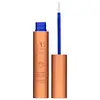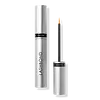What's inside
What's inside
 Key Ingredients
Key Ingredients

 Benefits
Benefits

 Concerns
Concerns

 Ingredients Side-by-side
Ingredients Side-by-side

Water
Skin ConditioningPolyglyceryl-10 Stearate
Skin ConditioningPentylene Glycol
Skin ConditioningHelianthus Annuus Seed Oil
EmollientUndaria Pinnatifida Extract
Skin ConditioningPanthenol
Skin ConditioningPropanediol
SolventGlycerin
HumectantPolyglyceryl-3 Diisostearate
EmulsifyingCarthamus Tinctorius Flower Extract
Skin ConditioningHibiscus Sabdariffa Flower Extract
Skin ConditioningSodium Benzoate
MaskingCarbomer
Emulsion StabilisingRicinus Communis Seed Oil
MaskingCitric Acid
BufferingO-Cymen-5-Ol
AntimicrobialHydrolyzed Hyaluronic Acid
HumectantBiotin
AntiseborrhoeicHydrolyzed Rice Protein
Skin ConditioningMaltodextrin
AbsorbentChondrus Crispus Extract
Skin ConditioningSodium Hydroxide
BufferingLactic Acid
BufferingSodium Hyaluronate
HumectantAloe Barbadensis Leaf Juice Powder
Skin ConditioningCamellia Sinensis Leaf Extract
AntimicrobialHydrogenated Lecithin
EmulsifyingTocopheryl Acetate
AntioxidantXanthan Gum
EmulsifyingPotassium Sorbate
PreservativeTocopherol
AntioxidantAlanyl Glutamine
HumectantArginine
MaskingOligopeptide-177
Phenylalanine
MaskingSisymbrium Irio Seed Oil
MaskingSodium Chloride
MaskingWater, Polyglyceryl-10 Stearate, Pentylene Glycol, Helianthus Annuus Seed Oil, Undaria Pinnatifida Extract, Panthenol, Propanediol, Glycerin, Polyglyceryl-3 Diisostearate, Carthamus Tinctorius Flower Extract, Hibiscus Sabdariffa Flower Extract, Sodium Benzoate, Carbomer, Ricinus Communis Seed Oil, Citric Acid, O-Cymen-5-Ol, Hydrolyzed Hyaluronic Acid, Biotin, Hydrolyzed Rice Protein, Maltodextrin, Chondrus Crispus Extract, Sodium Hydroxide, Lactic Acid, Sodium Hyaluronate, Aloe Barbadensis Leaf Juice Powder, Camellia Sinensis Leaf Extract, Hydrogenated Lecithin, Tocopheryl Acetate, Xanthan Gum, Potassium Sorbate, Tocopherol, Alanyl Glutamine, Arginine, Oligopeptide-177, Phenylalanine, Sisymbrium Irio Seed Oil, Sodium Chloride
Water
Skin ConditioningButylene Glycol
HumectantGlycerin
HumectantHydroxyethylcellulose
Emulsion StabilisingPalmitoyl Pentapeptide-4
Skin ConditioningAcetyl Tetrapeptide-3
Skin ProtectingMyristoyl Pentapeptide-17
Skin ConditioningBis-Aminopropyl Diglycol Dimaleate
Skin ConditioningSodium Hyaluronate
HumectantBiotin
AntiseborrhoeicPanthenol
Skin ConditioningAvena Sativa Kernel Extract
AbrasivePantethine
EmollientAminomethyl Propanol
BufferingSorbic Acid
PreservativeRhizobian Gum
Benzoic Acid
MaskingSodium Benzoate
MaskingDextran
Trifolium Pratense Flower Extract
AstringentCitric Acid
BufferingPhenoxyethanol
PreservativeChlorphenesin
AntimicrobialPotassium Sorbate
PreservativeWater, Butylene Glycol, Glycerin, Hydroxyethylcellulose, Palmitoyl Pentapeptide-4, Acetyl Tetrapeptide-3, Myristoyl Pentapeptide-17, Bis-Aminopropyl Diglycol Dimaleate, Sodium Hyaluronate, Biotin, Panthenol, Avena Sativa Kernel Extract, Pantethine, Aminomethyl Propanol, Sorbic Acid, Rhizobian Gum, Benzoic Acid, Sodium Benzoate, Dextran, Trifolium Pratense Flower Extract, Citric Acid, Phenoxyethanol, Chlorphenesin, Potassium Sorbate
Ingredients Explained
These ingredients are found in both products.
Ingredients higher up in an ingredient list are typically present in a larger amount.
Biotin is a B vitamin that is naturally produced by our bodies. It is also called Vitamin H.
Our bodies use biotin in the metabolism process. It also helps our bodies use enzymes and move nutrients around. A biotin deficiency can lead to brittle hair and nails.
More research is needed on applying biotin topically. However, taking biotin orally has been shown to help nourish the skin, hair, and nails. They play a role in forming skin-hydrating fatty acids.
Biotin is water-soluble. It can be found in foods such as fish, eggs, dairy, nuts, and meat. Vitamin H stands for "haar" and "haut". These are the German words for hair and skin.
Learn more about BiotinCitric Acid is an alpha hydroxy acid (AHA) naturally found in citrus fruits like oranges, lemons, and limes.
Like other AHAs, citric acid can exfoliate skin by breaking down the bonds that hold dead skin cells together. This helps reveal smoother and brighter skin underneath.
However, this exfoliating effect only happens at high concentrations (20%) which can be hard to find in cosmetic products.
Due to this, citric acid is usually included in small amounts as a pH adjuster. This helps keep products slightly more acidic and compatible with skin's natural pH.
In skincare formulas, citric acid can:
While it can provide some skin benefits, research shows lactic acid and glycolic acid are generally more effective and less irritating exfoliants.
Most citric acid used in skincare today is made by fermenting sugars (usually from molasses). This synthetic version is identical to the natural citrus form but easier to stabilize and use in formulations.
Read more about some other popular AHA's here:
Learn more about Citric AcidGlycerin is already naturally found in your skin. It helps moisturize and protect your skin.
A study from 2016 found glycerin to be more effective as a humectant than AHAs and hyaluronic acid.
As a humectant, it helps the skin stay hydrated by pulling moisture to your skin. The low molecular weight of glycerin allows it to pull moisture into the deeper layers of your skin.
Hydrated skin improves your skin barrier; Your skin barrier helps protect against irritants and bacteria.
Glycerin has also been found to have antimicrobial and antiviral properties. Due to these properties, glycerin is often used in wound and burn treatments.
In cosmetics, glycerin is usually derived from plants such as soybean or palm. However, it can also be sourced from animals, such as tallow or animal fat.
This ingredient is organic, colorless, odorless, and non-toxic.
Glycerin is the name for this ingredient in American English. British English uses Glycerol/Glycerine.
Learn more about GlycerinPanthenol is a common ingredient that helps hydrate and soothe the skin. It is found naturally in our skin and hair.
There are two forms of panthenol: D and L.
D-panthenol is also known as dexpanthenol. Most cosmetics use dexpanthenol or a mixture of D and L-panthenol.
Panthenol is famous due to its ability to go deeper into the skin's layers. Using this ingredient has numerous pros (and no cons):
Like hyaluronic acid, panthenol is a humectant. Humectants are able to bind and hold large amounts of water to keep skin hydrated.
This ingredient works well for wound healing. It works by increasing tissue in the wound and helps close open wounds.
Once oxidized, panthenol converts to pantothenic acid. Panthothenic acid is found in all living cells.
This ingredient is also referred to as pro-vitamin B5.
Learn more about PanthenolPotassium Sorbate is a preservative used to prevent yeast and mold in products. It is commonly found in both cosmetic and food products.
This ingredient comes from potassium salt derived from sorbic acid. Sorbic acid is a natural antibiotic and effective against fungus.
Both potassium sorbate and sorbic acid can be found in baked goods, cheeses, dried meats, dried fruit, ice cream, pickles, wine, yogurt, and more.
You'll often find this ingredient used with other preservatives.
Learn more about Potassium SorbateSodium Benzoate is a preservative. It's used in both cosmetic and food products to inhibit the growth of mold and bacteria. It is typically produced synthetically.
Both the US FDA and EU Health Committee have approved the use of sodium benzoate. In the US, levels of 0.1% (of the total product) are allowed.
Sodium benzoate works as a preservative by inhibiting the growth of bacteria inside of cells. It prevents the cell from fermenting a type of sugar using an enzyme called phosphofructokinase.
It is the salt of benzoic acid. Foods containing sodium benzoate include soda, salad dressings, condiments, fruit juices, wines, and snack foods.
Studies for using ascorbic acid and sodium benzoate in cosmetics are lacking, especially in skincare routines with multiple steps.
We always recommend speaking with a professional, such as a dermatologist, if you have any concerns.
Learn more about Sodium BenzoateSodium Hyaluronate is hyaluronic acid's salt form. It is commonly derived from the sodium salt of hyaluronic acid.
Like hyaluronic acid, it is great at holding water and acts as a humectant. This makes it a great skin hydrating ingredient.
Sodium Hyaluronate is naturally occurring in our bodies and is mostly found in eye fluid and joints.
These are some other common types of Hyaluronic Acid:
Learn more about Sodium HyaluronateWater. It's the most common cosmetic ingredient of all. You'll usually see it at the top of ingredient lists, meaning that it makes up the largest part of the product.
So why is it so popular? Water most often acts as a solvent - this means that it helps dissolve other ingredients into the formulation.
You'll also recognize water as that liquid we all need to stay alive. If you see this, drink a glass of water. Stay hydrated!
Learn more about Water